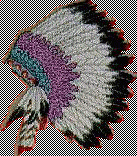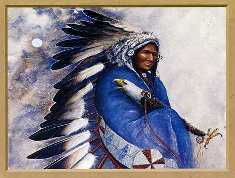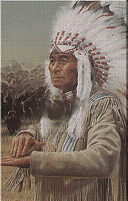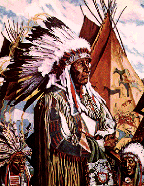
War Bonnets

The "war bonnet" arose from the Sioux or Crow tribes on the plains of North America, and rapidly spread to other tribesmen. This bonnet, said to be symbolic of the sun and its spreading rays was quite uncommon originally and could only be worn by the bravest warriors. As the tradition spread, bonnets capped every Plains tribe's bravest warriors. Thanks to the glamorizing of the Sioux, every important Native American in modern times is expected to own and wear a war bonnet.

Local birds such as yellow-headed blackbirds, turkeys, ducks, flickers, woodpeckers, road runners, and scissortails were the sources of a bonnet's plumage before the introduction of colorful modern dyes. Each part of the preparation of a single feather might have significance. The killing of any enemy was indicated in one tribe by horsehair tips. Among the Crees, it was shown the wearer had wrestled and overcome an enemy by the removal of web from most of the quill. The signature of the bonnet maker is indicated by the major plume in the back of the bonnet which marked the sign of individiual achievement. Distinguished warriors who performed many exploits were so honored by attaching strips of rabbit fur or ermine with pieces of cloth hanging down.




 "One Star"
"One Star"



 Dakota Council
Dakota Council
